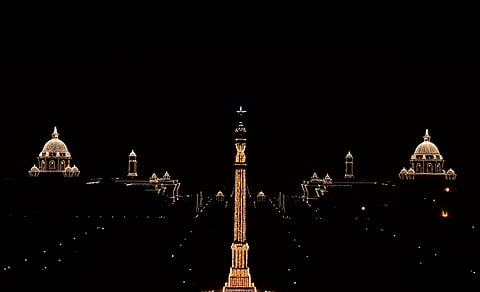All the President's Guests
When he visited India for the first time in December 1959, US President Dwight David Eisenhower chose to travel in an open car—a blue Cadillac—from Palam Airport to the Rashtrapati Bhavan. The route was lit by “hundreds of fluorescent lights” and lined with a “million-plus” people, who had come to greet the leader of America, the new global superpower.
Traffic jams brought Eisenhower’s motorcade to a near-standstill at Connaught Place where the retinue of policemen deployed were finding it impossible to manage the crowds. “Pandit Nehru came out of the car to regulate the traffic himself, but that didn’t work either,” says Dr Thomas Mathew, additional secretary to President Pranab Mukherjee and author of Abode Under the Dome: State Guests at Raisina Hill 1947-67 and Their Subsequent Visits.
In this book, Dr Mathew chronicles in vivid detail 52 visits of 32 heads of state/leaders from 1947 to 1967, who stayed as guests at the Rashtrapati Bhavan.
The 300-odd pages of the coffee-table book have numerous rare pictures of eminent world leaders with erstwhile Indian Presidents, Dr Rajendra Prasad and Dr Sarvepalli Radhakrishnan, and Prime Ministers Jawaharlal Nehru and Indira Gandhi.
Besides providing the political context of each visit, the author recreates it by detailing the preparations at the President’s Estate prior to the event, the security arrangements and advisories issued, and the peculiar situations they sometimes led to. For instance, when Queen Elizabeth II visited India in 1961, the logistics of transporting her six-foot high wardrobes became a challenge for the President’s Secretariat. The outfits could not be transferred into containers as the Queen’s wardrobe was “a closely guarded secret.” Since the President owned no such transportation vehicles, open lorries from the Ministry of Defence were called in and covered with “tarpaulin and canvas cloth”.
Dr Mathew, who finished this tome in a record nine months, poured over hundreds of newspaper clippings, journals, government documents, online resources and biographies to put together all the information. The painstaking research was made harder, he says, by the fact that many related files had been lost/destroyed over the decades. “The fact that in case of many visits, there were no files available made this book all the more significant. It also helps see how these world leaders viewed India—the largest country to gain independence from a colonial power in the 20th century—as a new democratic experiment,” he says.
The introduction to the book serves as a handy guide to the President’s Estate and its history, from its Renaissance-Indian architectural style (decided upon after a long tiff between Sir Edwin Lutyens and Viceroy Lord Hardinge), to the Forecourt, the Dome, the Durbar Hall, the Ashok Hall, the Banquet Hall and the Mughal Gardens. It also contains some gorgeous photographs and pull-outs of the Bhavan, which have been taken by the author.
The inspiration for this mammoth project came from the President, who wished to document the visits of eminent world leaders during the most crucial phase of India’s foreign policy.

